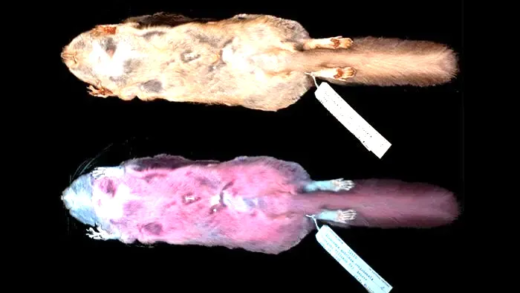This article provides essential tips on caring for an injured cat, including recognizing injury signs, first aid basics, when to call a vet, creating a recovery space, handling pain, and preventing future injuries.
Recognizing the Signs of an Injured Cat
Cat injury signs can be subtle, but they are crucial for understanding if your feline friend is hurt. Look for these common indicators:
- Limping: If your cat is favoring a paw or limping, it could indicate an injury.
- Hiding: Cats often retreat to quiet places when they are in pain.
- Changes in Behavior: Uncharacteristic aggression or withdrawal can signal distress.
- Excessive Grooming: Over-grooming a specific area might indicate an injury.
- Vocalization: Increased meowing or growling can be a sign of discomfort.
Understanding how to identify if your cat is hurt is vital for their well-being. Monitor your cat closely, especially after accidents or if they display unusual behavior. If you notice any of these signs, it’s essential to assess the situation calmly. Check for visible injuries, but remember not to rush in; your cat may be scared and defensive.
Overall, recognizing these signs can help you act quickly. If you suspect your cat is injured, providing immediate care is crucial, and knowing when to consult a vet can make all the difference in their recovery.
Approaching an Injured Cat Safely
When it comes to an injured cat, knowing how to approach them safely is crucial. Cats can be skittish, especially when they’re in pain. To ensure you don’t frighten your feline friend, follow these steps:
- Stay Calm: Your cat can sense your emotions. Approach slowly and quietly to avoid startling them.
- Use a Soft Voice: Speak gently to reassure your cat. A soothing tone can make them feel more secure.
- Observe Body Language: Look for signs of aggression or fear. If the cat hisses or swats, back off and give them space.
- Approach from the Side: Don’t come straight at them; this can be perceived as a threat. Instead, move to the side and lower yourself to their level.
- Offer a Treat: If it’s safe, use treats to coax them closer. This can help build trust and make the approach less intimidating.
Understanding how to get close without causing stress is essential for both your safety and your cat’s well-being. Once you’re close, assess their condition without rushing. This method ensures you can provide the necessary care while keeping your cat calm.
First Aid Basics for Cats
First aid for injured cats can be a lifesaver. Knowing basic steps can help you provide immediate care before reaching the vet. Here’s what to do:
- Stay Calm: Your demeanor can impact your cat’s behavior. Keep a cool head.
- Assess the Injury: Check for visible wounds, swelling, or bleeding. Look for signs of pain, like flinching or vocalizing.
- Control Bleeding: If your cat is bleeding, apply gentle pressure with a clean cloth. If the bleeding doesn’t stop, it’s time to visit the vet.
- Clean Minor Wounds: For small cuts, rinse the area with clean water. Avoid using hydrogen peroxide or alcohol as they can irritate the wound.
- Immobilize Fractures: If you suspect a broken bone, keep your cat still and avoid moving them unnecessarily.
Learning what immediate care you can provide before reaching the vet can greatly improve your cat’s chances of recovery. Always follow up with a vet visit for further evaluation and treatment.
When to Call the Vet
Knowing when to take your injured cat to the vet is essential for their health. Certain signs indicate it’s time for professional help:
- Excessive Bleeding: If your cat is bleeding heavily, apply pressure and get to a vet immediately.
- Severe Pain: If your cat is vocalizing in pain or cannot move, it’s crucial to seek veterinary care.
- Difficulty Breathing: Labored breathing or lethargy can signal serious issues that require urgent attention.
- Broken Bones: If you suspect a fracture, don’t attempt to treat it at home. Immobilizing the cat and heading to the vet is the best course of action.
- Signs of Shock: Symptoms like a rapid heartbeat, pale gums, or a weak pulse indicate your cat needs immediate care.
Being alert to these signs can save your cat’s life. Don’t hesitate to call your vet if you’re unsure; it’s always better to be safe than sorry.
Caring for Your Cat at Home
Creating a comfortable recovery space for your injured cat is essential. Here’s how to help them heal:
- Quiet Space: Set up a cozy, quiet area away from noise and other pets where your cat can rest undisturbed.
- Monitor Their Condition: Keep an eye on their eating, drinking, and bathroom habits. Any changes can indicate complications.
- Provide Soft Bedding: Ensure they have a comfortable bed to support their healing. Soft, clean blankets can make a big difference.
- Limit Activity: Keep your cat from jumping or running. Encourage gentle play, but only if they seem up for it.
- Follow Vet Instructions: If your vet prescribed medication or a specific care routine, follow it precisely to aid recovery.
A supportive environment can significantly enhance your cat’s recovery. Be attentive, patient, and provide the love they need during this time.
Handling Painful Situations
Managing an injured cat in pain requires gentle care. Here are some best practices:
- Stay Calm: Your cat can sense your anxiety. Keeping calm can help them feel more secure.
- Pain Relief: Consult your vet about safe pain relief options. Never give human medications as they can be harmful.
- Comforting Techniques: Petting or soft talking can soothe your cat. Use a gentle touch and avoid sudden movements.
- Regular Check-ins: Frequently check in on them to ensure they are comfortable and not in distress.
- Limit Stressors: Keep the environment peaceful. Avoid loud noises or sudden changes that may agitate them.
By using these tips, you can help your cat manage pain and recover more comfortably.
Preventing Future Injuries
Preventing cat injuries is key to ensuring their safety. Here are some practical tips:
- Secure Your Home: Make sure windows and balconies are secure. Use screens to prevent falls.
- Provide Safe Play Areas: Create a safe space for play that is free from sharp objects or hazards.
- Regular Vet Check-ups: Regular visits to the vet can help catch potential health issues before they become serious.
- Watch for Outdoor Dangers: If your cat goes outside, supervise them to avoid encounters with other animals or traffic.
- Encourage Indoor Play: Engage your cat with toys and activities that stimulate them mentally and physically while keeping them safe indoors.
Implementing these strategies can significantly reduce the risk of injuries in your feline friend. Keeping them safe is an ongoing commitment.





Comments are closed.